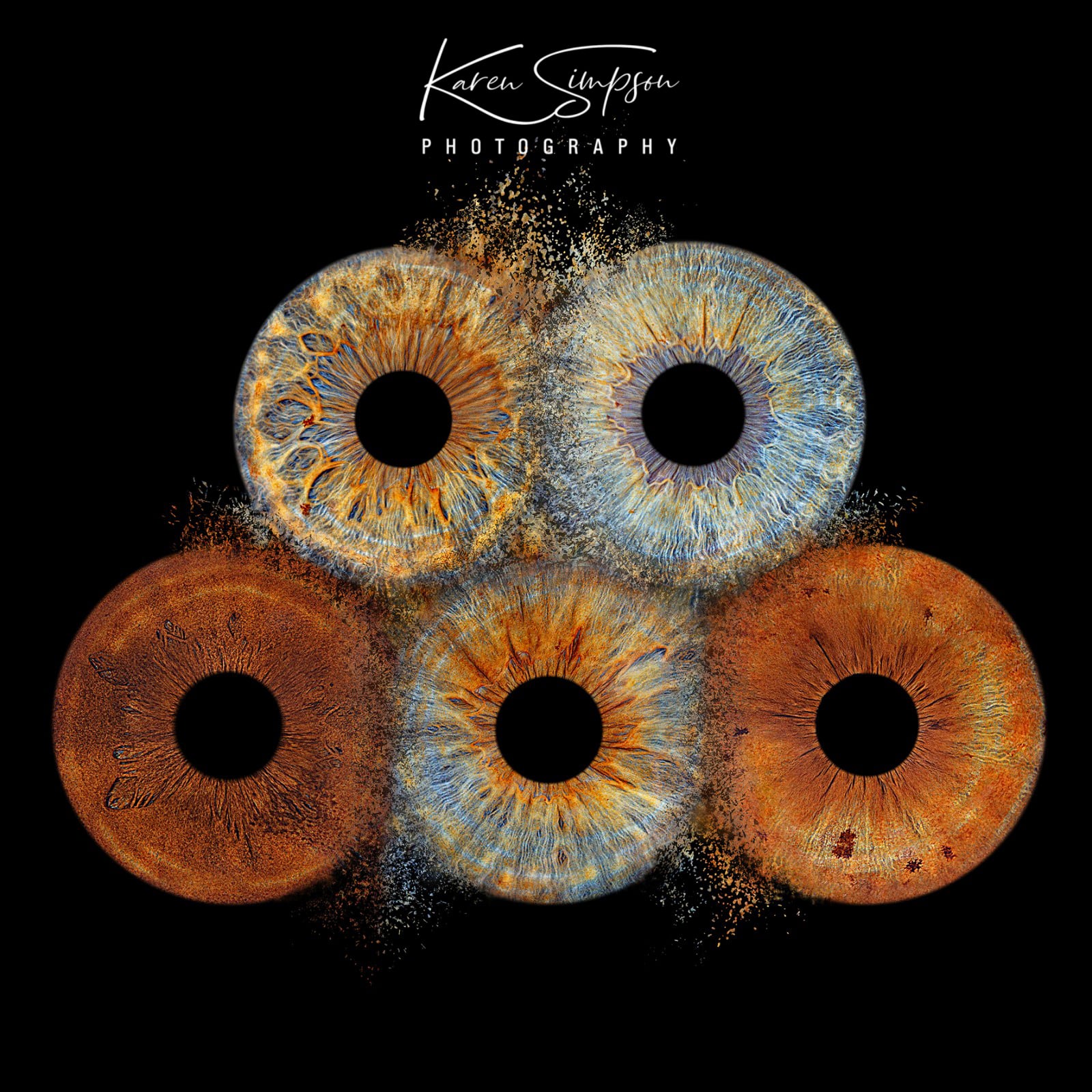
How and Why Your Iris Colour Can Change
The colour of your iris is primarily determined by genetics, but it can change over time due to several factors, including age, injury, and health conditions. While most people assume that their eye colour remains the same throughout life, there are instances where the iris can undergo subtle shifts in hue, adding an extra layer of complexity to the already fascinating world of Iris Photography.
The Role of Melanin in Iris Colour
The primary determinant of iris colour is melanin, the pigment that also affects the colour of your skin and hair. When you’re born, your body hasn’t produced much melanin yet, which is why many newborns have blue or grey eyes. Over the first few months of life, melanin production increases, and by the time you’re about six months old, your permanent eye colour is usually established. More melanin results in darker eyes (brown or hazel), while less melanin leads to lighter eyes (blue or green).
Changes in Iris Colour Due to Age
One of the most common reasons for iris colour change is aging. As we grow older, the levels of melanin in the iris can decrease, resulting in lighter eye colour. For example, people with brown eyes may notice their eyes becoming lighter or taking on a more hazel tone as they age. This process is gradual and often subtle, but it’s a normal part of aging.
On the other end of the spectrum, some individuals may experience darkening of the iris over time. This is less common, but it can occur due to an increase in melanin production or other biological factors.
Health Conditions That Affect Iris Colour
Several medical conditions can cause changes in iris colour. One of the most well-known is **heterochromia**, where an individual has two different coloured eyes, or one eye has two distinct colours. While heterochromia can be genetic and present from birth, it can also develop later in life due to injury or certain health conditions.
Fuchs’ heterochromic iridocyclitis is an inflammatory condition that can cause the iris to lose some of its pigmentation, leading to a lighter appearance in one eye.
Horner’s syndrome, a condition affecting the nerves in the eyes and face, can cause a change in the iris colour, typically resulting in a lighter eye on the affected side.
Glaucoma and some of its treatments can also cause the iris to darken over time.
Medications That Influence Iris Colour
Certain medications can cause changes in iris colour, particularly those used to treat glaucoma. One common treatment involves the use of prostaglandin analogues, which can gradually darken the iris. This happens because the medication stimulates an increase in melanin production, particularly in the stroma (the front layer of the iris), which leads to a darker appearance over time.
Iris Colour and Light
Although the structure and pigment of the iris remain consistent, external factors like lighting can influence how the colour of your iris is perceived. In different lighting conditions, your eyes may appear to change colour slightly. For instance, in dim lighting, blue or green eyes might look darker, while under bright light, their natural hue may seem more vibrant. This optical phenomenon can give the impression that your eyes are changing colour when in reality, it’s just a change in how light interacts with the melanin in the iris.
Emotional State and Pupil Dilation
Changes in pupil size, often triggered by emotions or light exposure, can also make it seem like your eye colour is shifting. When your pupils dilate, more of the darker pupil is visible, and less of the coloured iris is exposed. This can make your eyes appear darker or more intense in certain situations, such as when you’re excited, scared, or in low light. Conversely, when your pupils are smaller in bright light, the full iris is visible, and the true colour of your eyes is more prominent.
Why This Matters for Iris Photography
The fact that your iris can change colour, even slightly, adds a fascinating dimension to Iris Photography. Every photograph captures the moment’s uniqueness, including subtle shifts in the colour and patterns of your eye. Whether your eyes are a vibrant blue that reflects your youth or a hazel that has deepened over the years, each image tells a story about where you are in your life.
Iris Photography doesn’t just capture the intricate structures of the eye—it also preserves its current state, reflecting any of the subtle changes you’ve experienced. This makes the art form even more personal, as no two images will ever be exactly alike, even for the same individual.
Capturing Your Unique Iris
Ready to celebrate the uniqueness of your iris, whether it’s recently shifted colour or has stayed the same throughout your life? Book an Iris Photography session and turn your ever-evolving eyes into a timeless piece of art.


